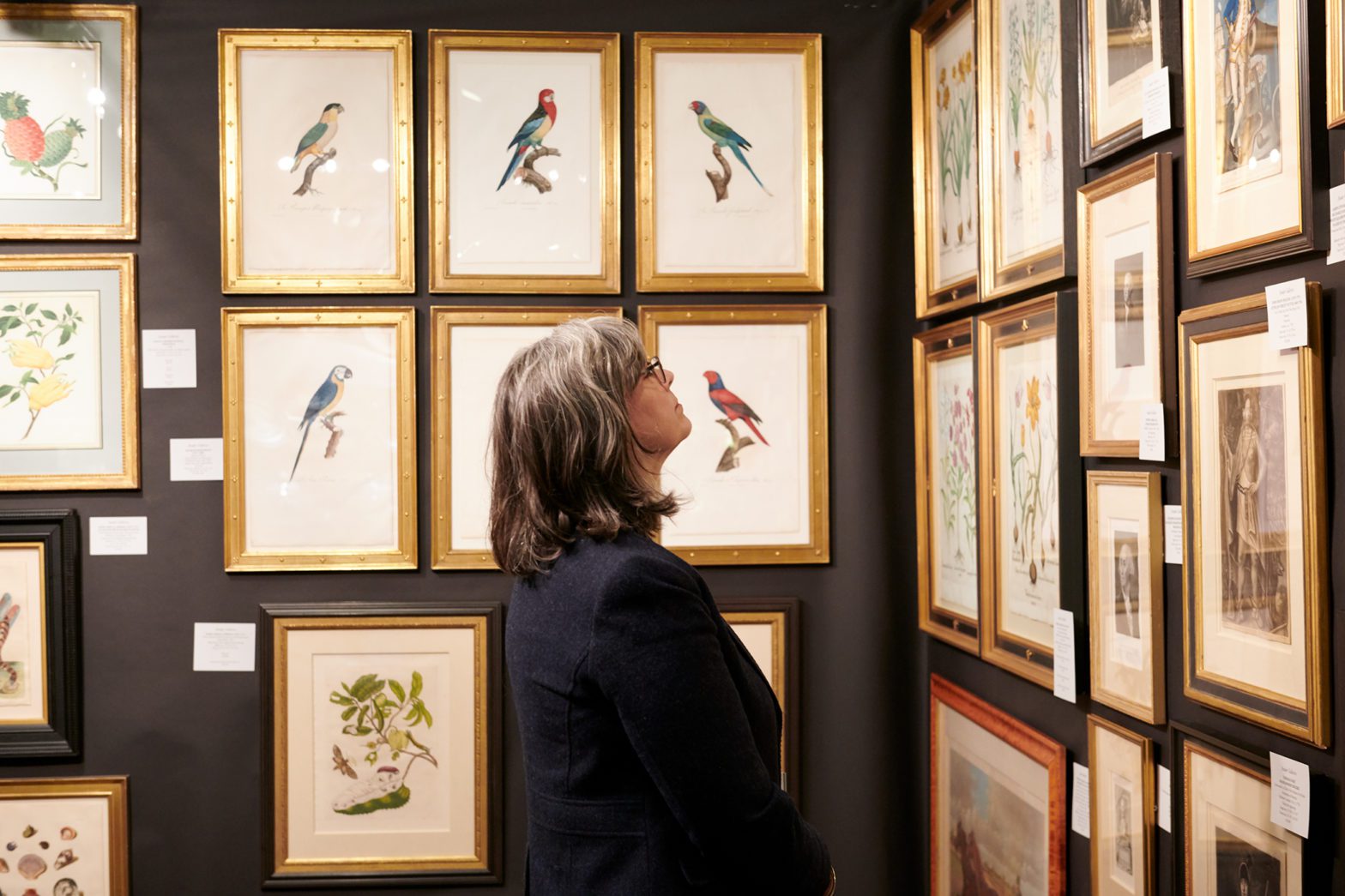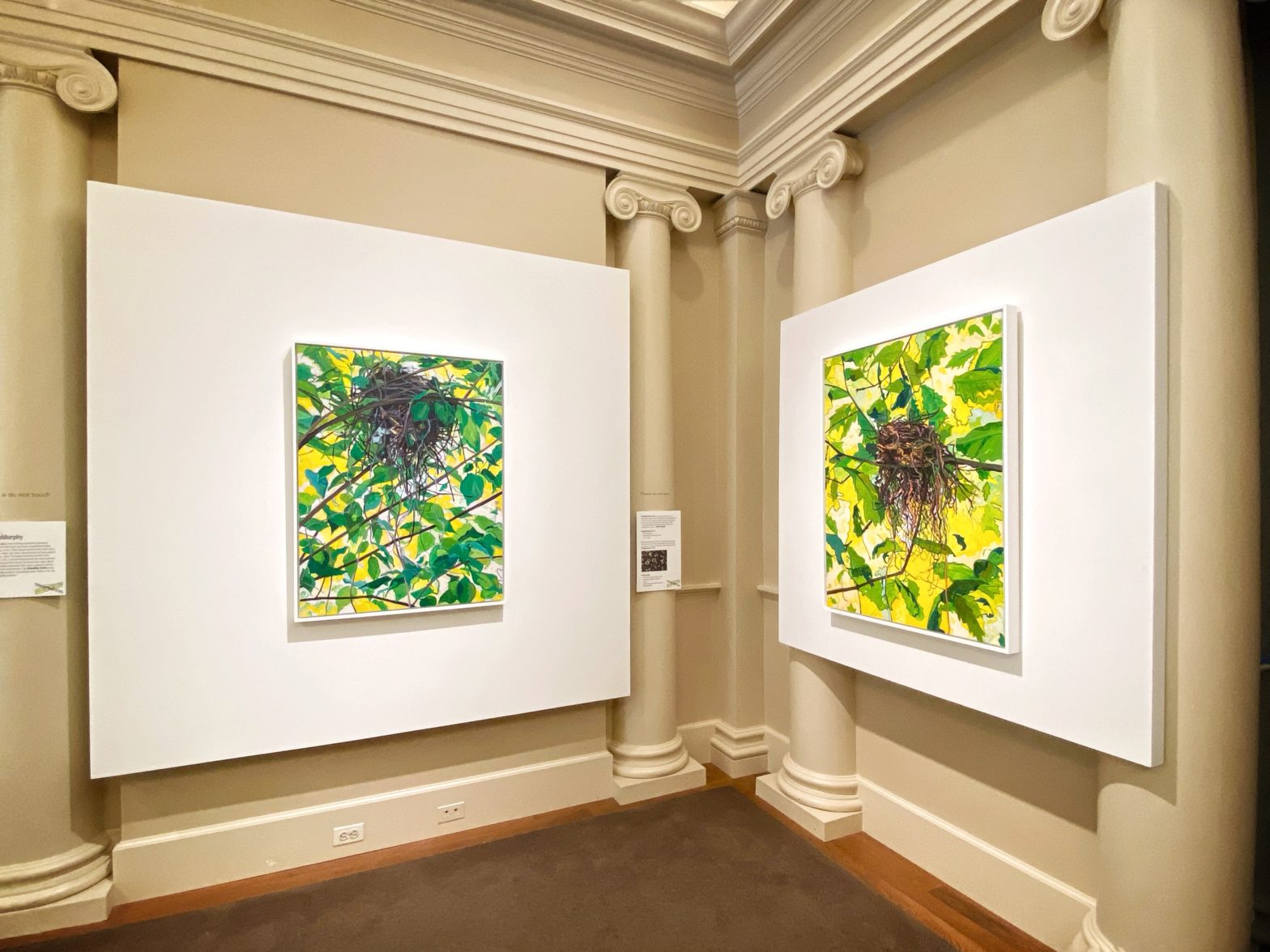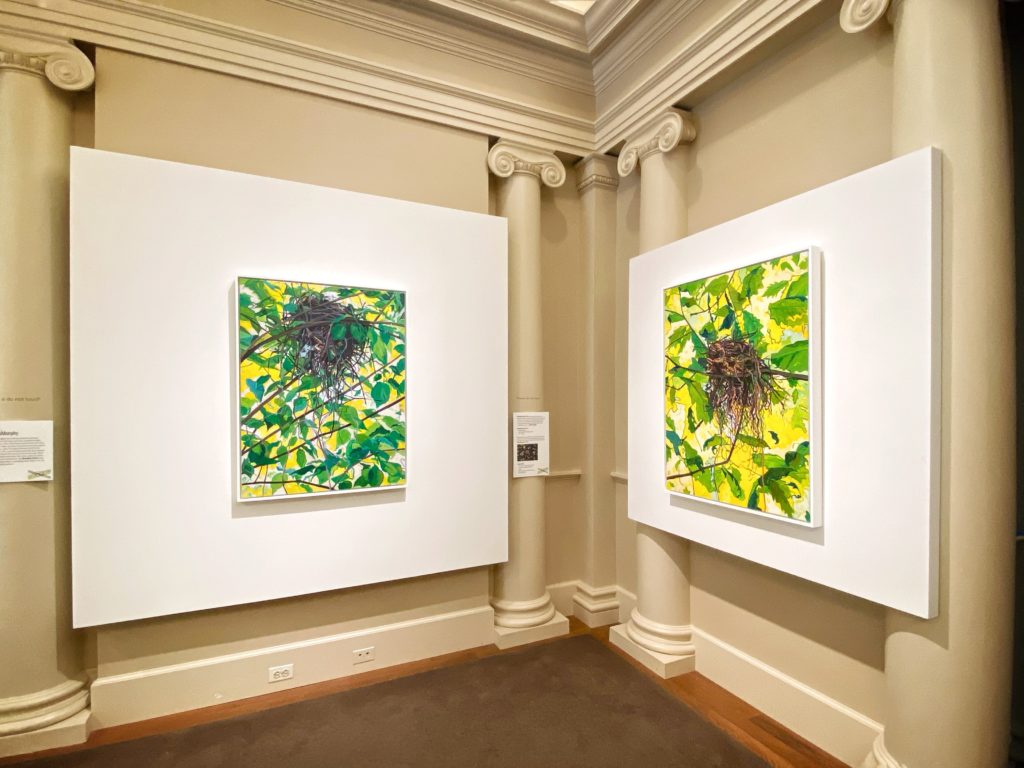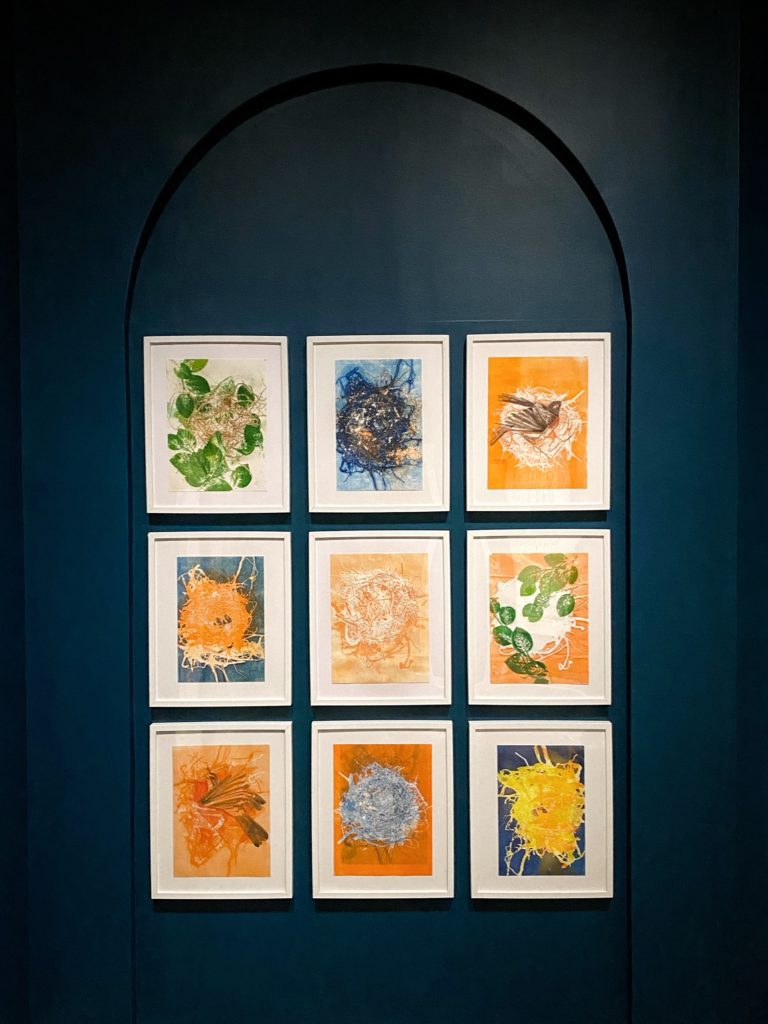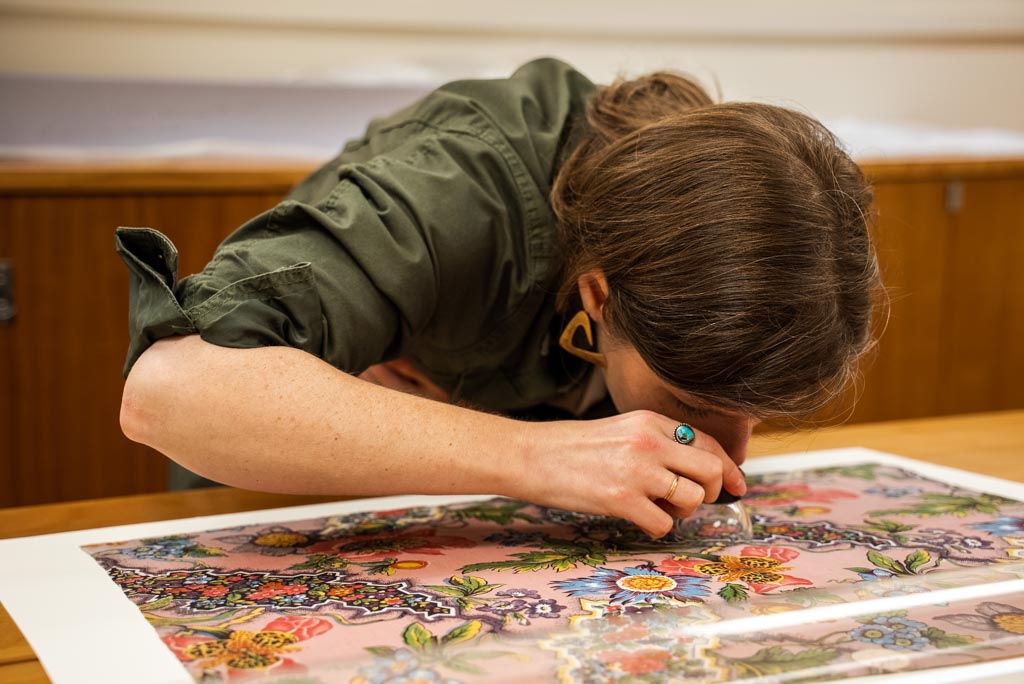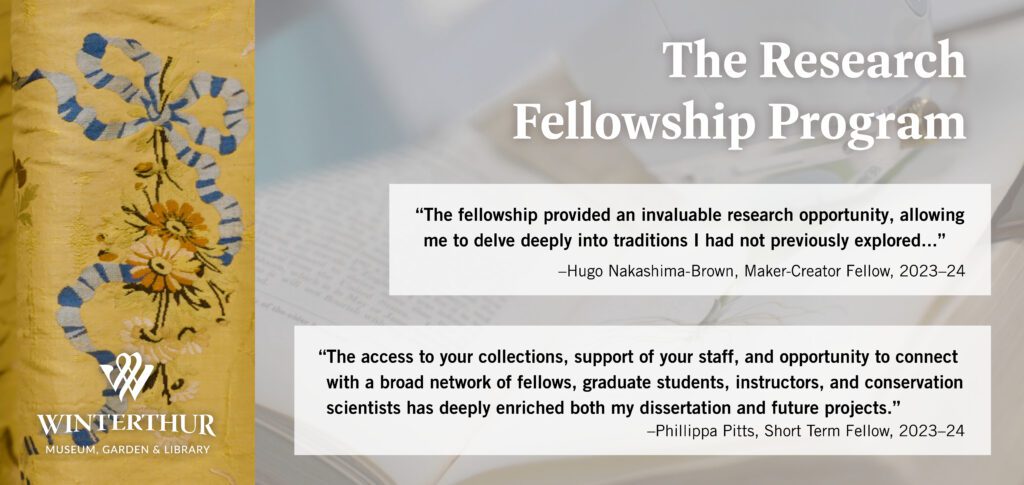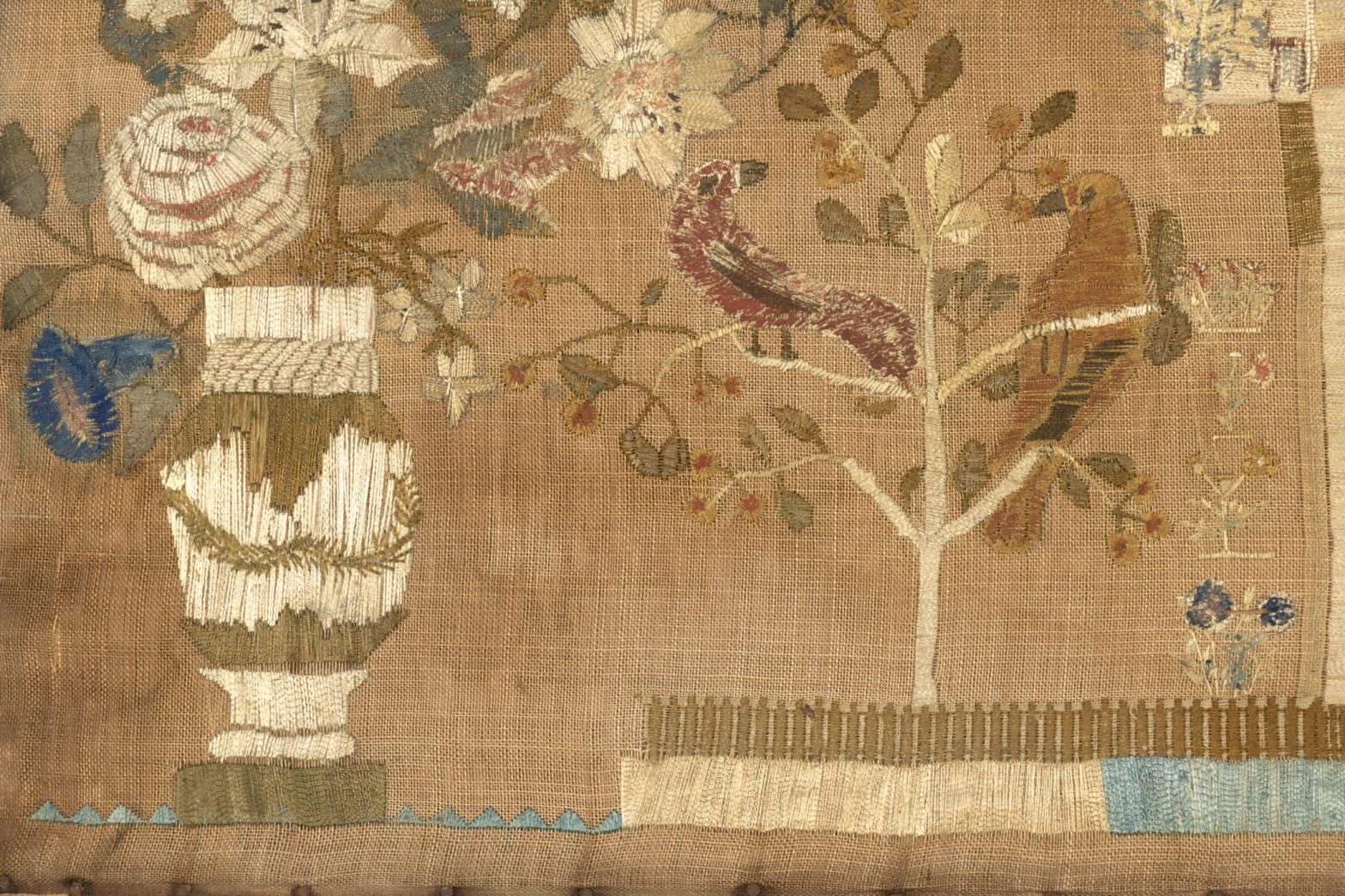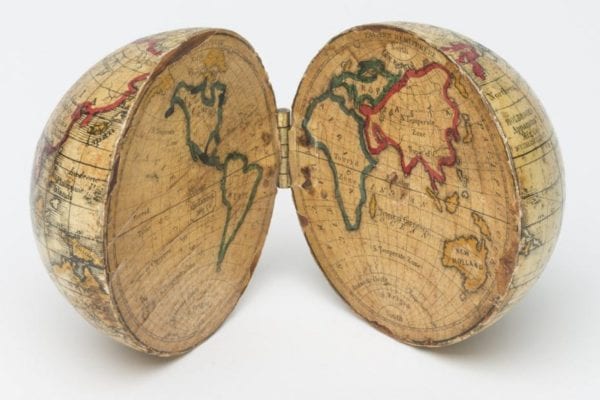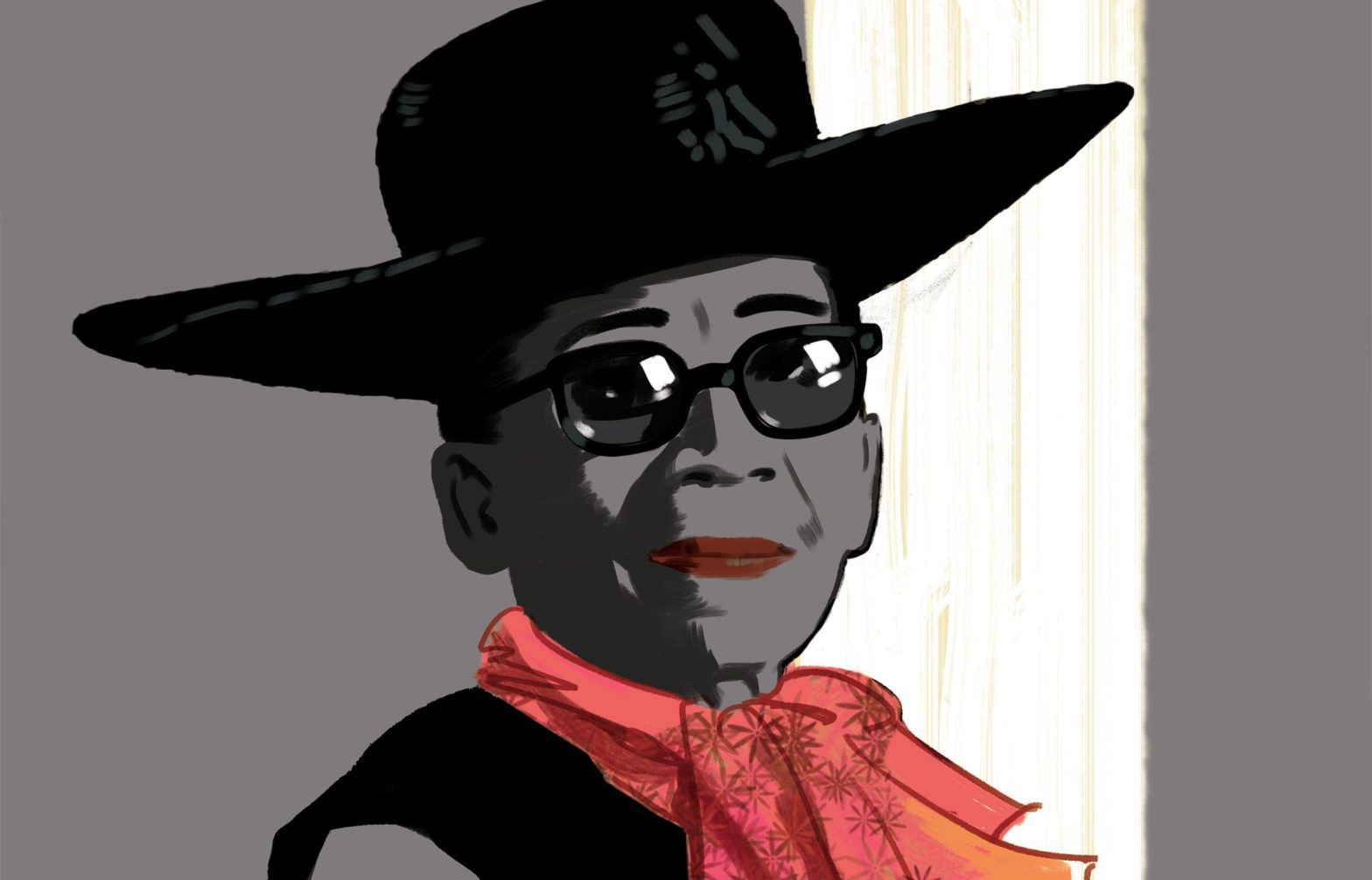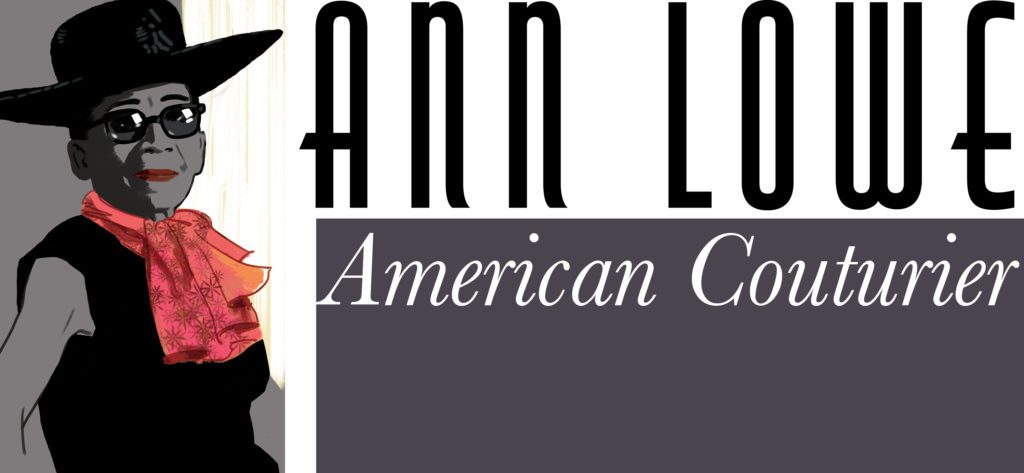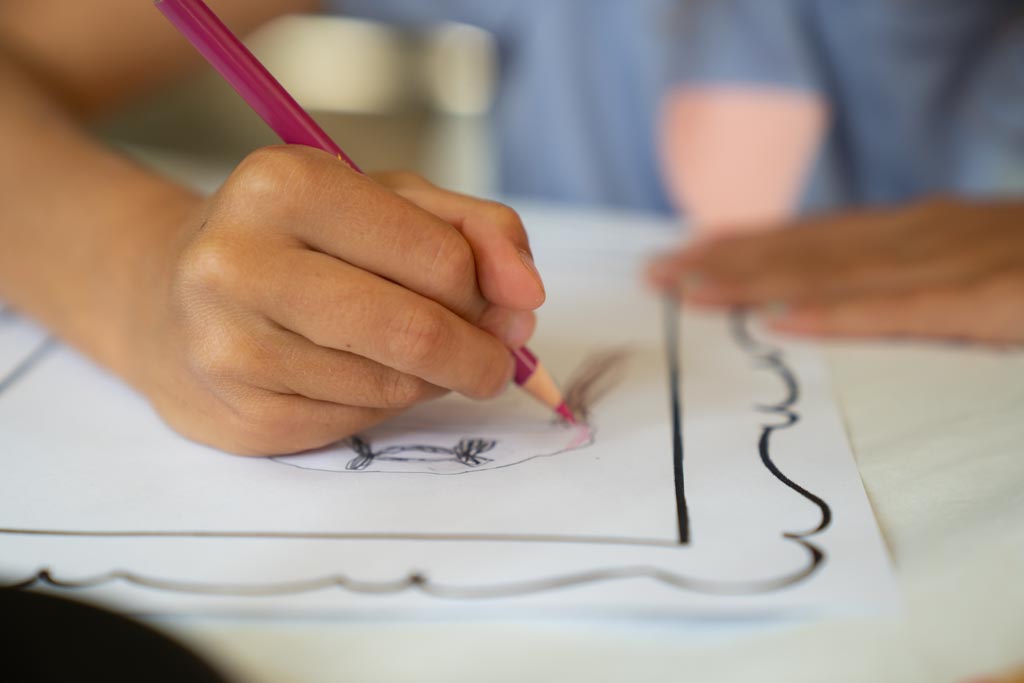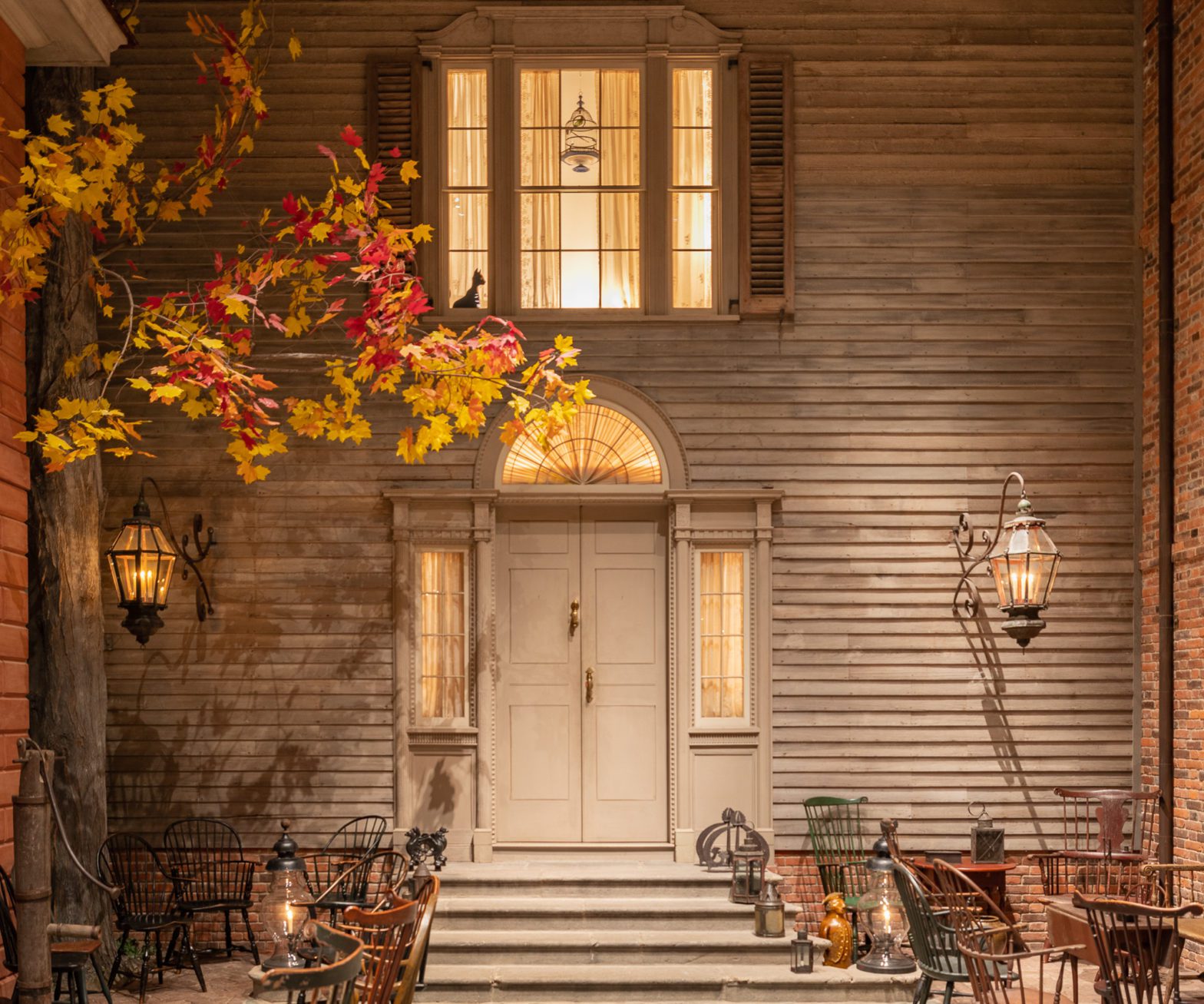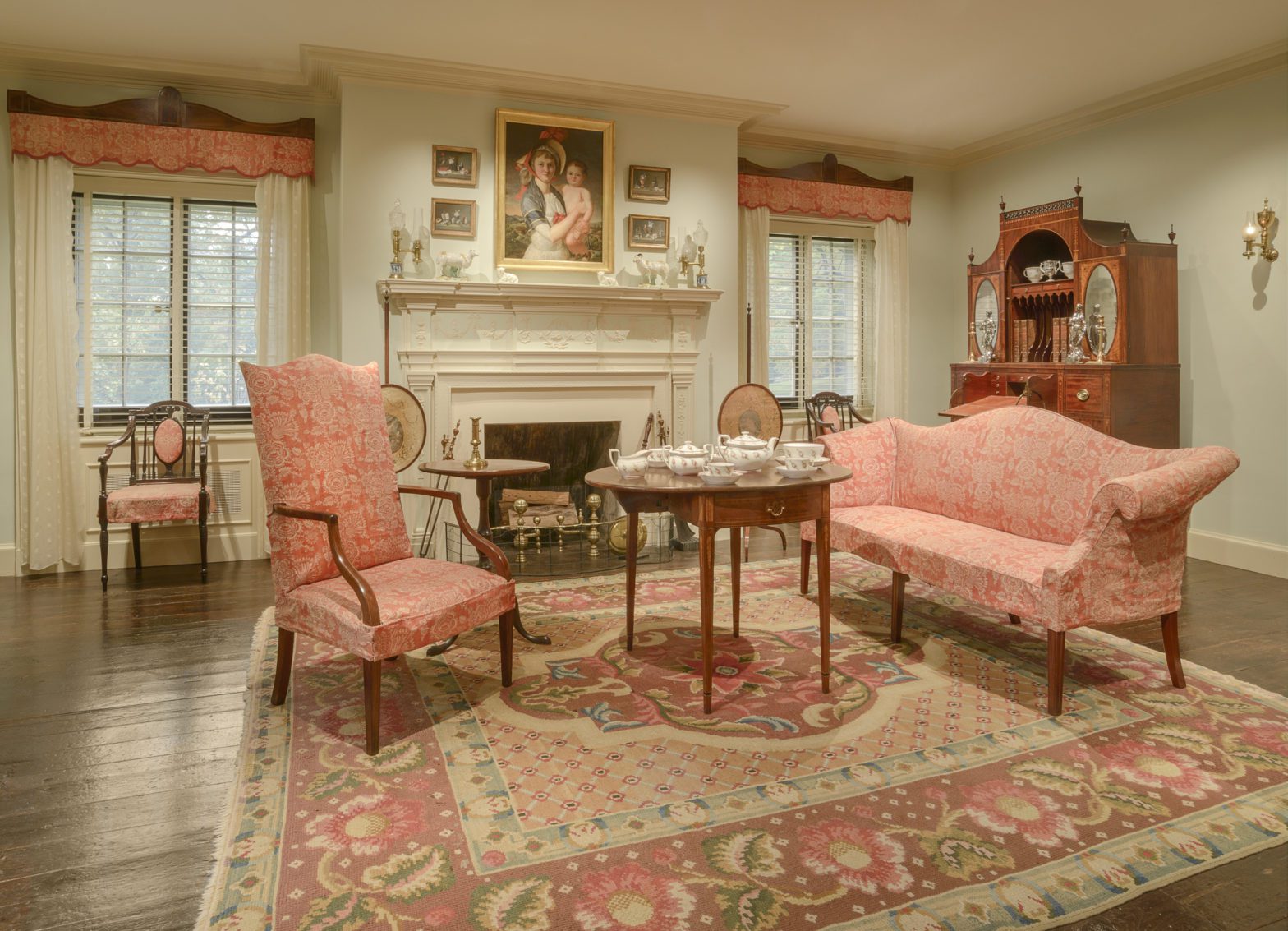Applications are due January 15, 2025.
Notice of acceptance is sent by April 1.
Click the ONLINE APPLICATION PORTAL button at the bottom of this page to begin your application.
Academic Programs staff are available to review draft application narratives received from Maker-Creator Fellowship applicants before December 1. Feedback will be sent in reply by mid-December. Please email Academic Programs to inquire about a review request.
When I originally applied, [library staff] gave me a few additional library items to study that helped me round out my research plan. The feedback on my proposal offered by [Program staff] also helped me to develop those plans… (T)his… pre-application consultation prepared me well for the fellowship.
Brigitte Bailey, Short-Term Fellow, 2020-21
Components
Application form
If you are applying for a Postdoctoral fellowship or a Dissertation fellowship, your application may be considered for other eligible fellowship categories if your proposal is not accepted in your preferred category. For example,
- Postdoctoral applications are eligible for the Short-Term fellowship category.
- Dissertation applications are eligible for the Short-Term fellowship category.
Essay
Upload an application essay of no more than 1,500 words (PDF only) that provides a concise overview of your project. Address the following questions:
- What ideas, questions, or problems guide your project?
- What is distinctive about your project? How does it complement, expand, or challenge prior study in the field? Please be specific about prior scholarship that informs your work.
- What work do you plan to undertake at Winterthur? Why is a fellowship at Winterthur necessary for successful completion of your project? How do you intend to study, question, and examine the Winterthur collections in service of your project? Please outline any specific needs or requests (ex. drawing, measuring, photography).
Bibliography
Using Winterthur’s online guides to the library, museum, and garden collections, provide a two-page preliminary bibliography of primary sources you plan to use or consult at Winterthur (PDF only). At this stage, please include no more than 20 museum objects as examples of what you would most likely wish to consult (if selected for a fellowship we will consult with you again to create a plan of work). You may group objects in your list (for example, English transferware jugs made between 1750-1775, rather than naming 20 individual objects). Otherwise, please list a call number/object number for each object (ex. glass pitcher, 1959.0059) or library source. For library sources, see WinterCat. For museum objects, see Museum Collection Digital Database. For garden objects, see Plant Finder.
Vita
Provide a copy of your current vita (PDF only; 5 pages max).
References
Request two recent letters of reference addressing your scholarly record, your current project, and your ability to work with a collegial group. If you are applying for a Dissertation Fellowship, one of these letters must come from your dissertation advisor.
Work Samples (Maker-Creator Applicants Only)
Provide the following digital work samples:
- Portfolio of 5-10 high-res images or videos of your work (JPG, JPEG, or PDF for visual files; MP3 or MP4 for video files; YouTube or Vimeo for hosted video – please include time stamps where review should occur) OR
- For writers, a writing sample of current or previous work (ex. play and video scripts; prose and poetry; works of non-fiction, etc.), not to exceed 10 pages in length (PDF only).
- You are strongly encouraged to include any relevant reviews of your work by professional critics (PDF or web address) and web addresses for samples that can be viewed online.
- Mailed work samples will not be accepted.
If you have questions, please email AcademicPrograms@winterthur.org.
To access the application, please click the button below
ONLINE APPLICATION PORTAL
